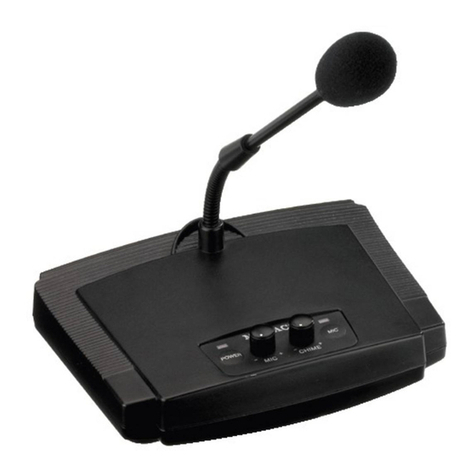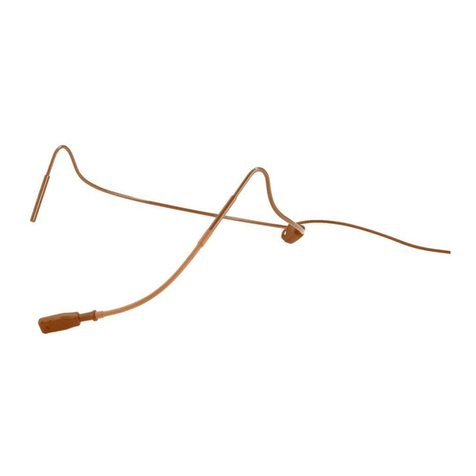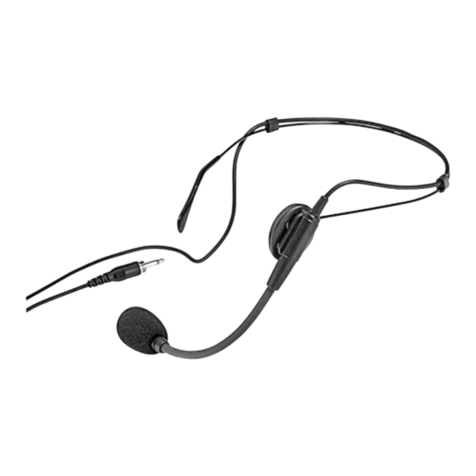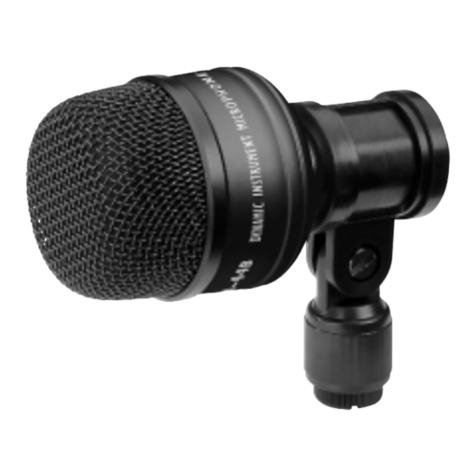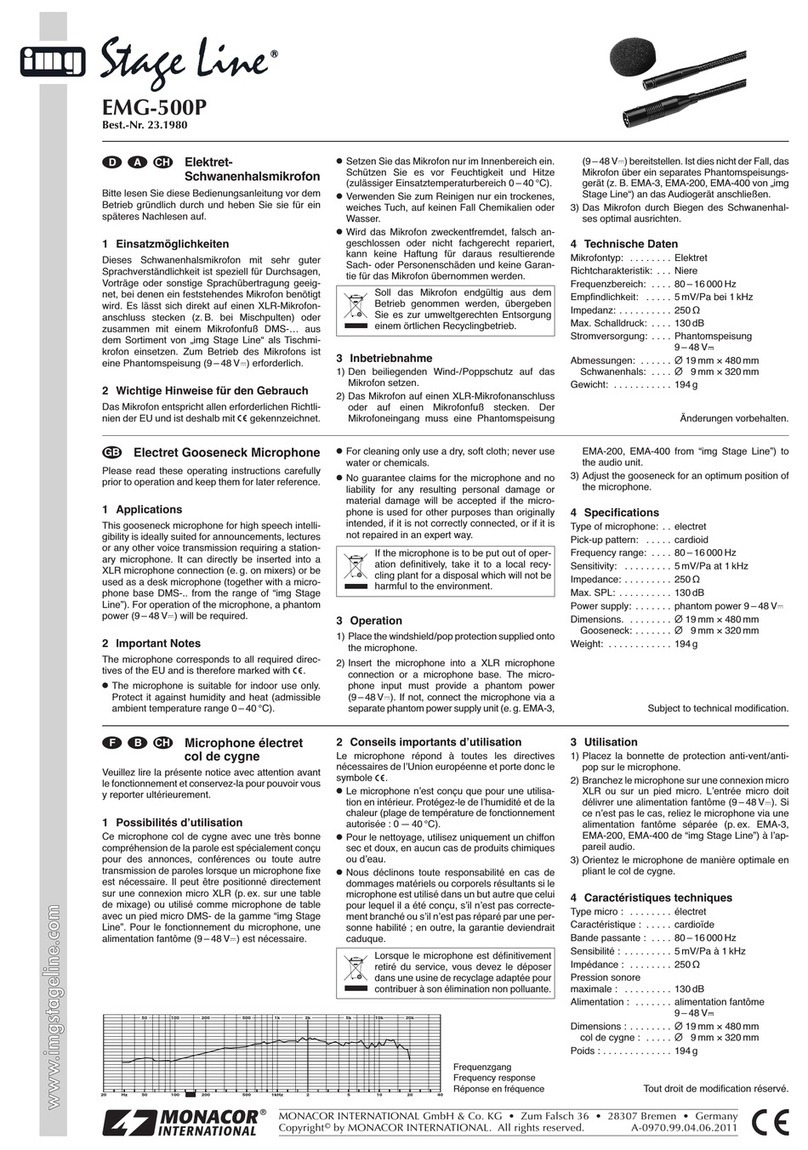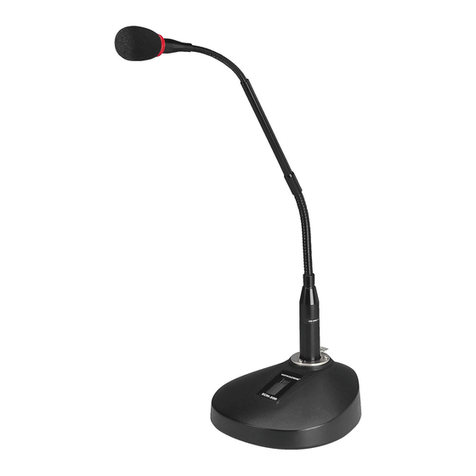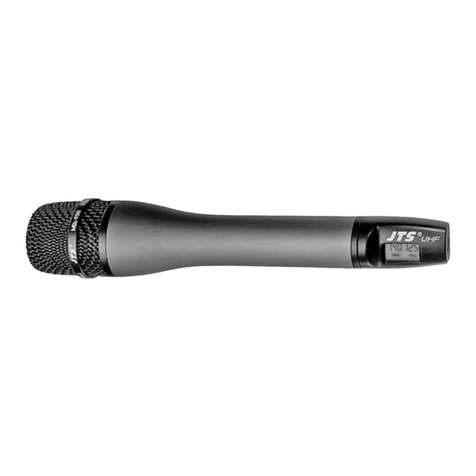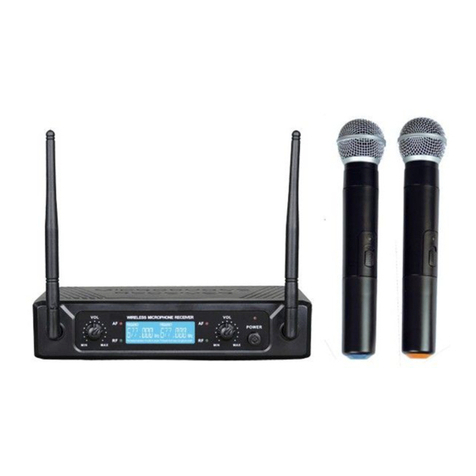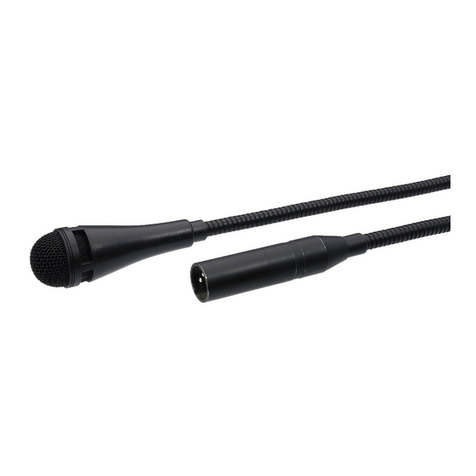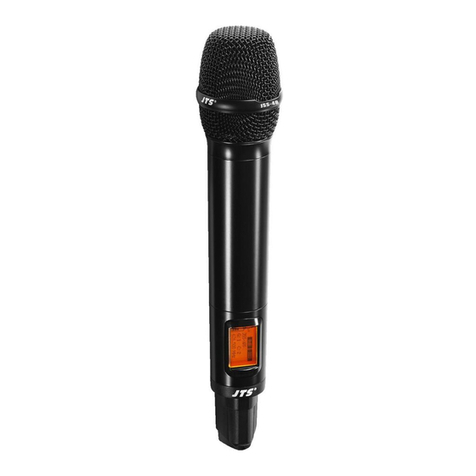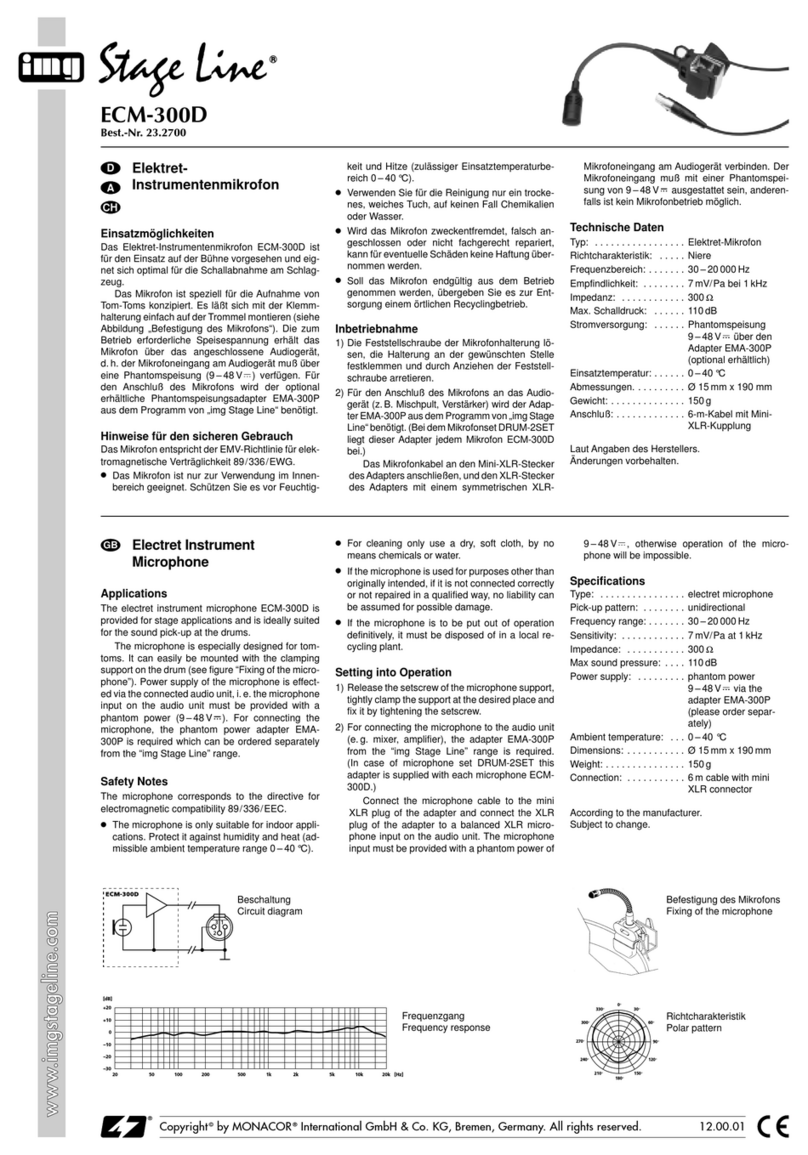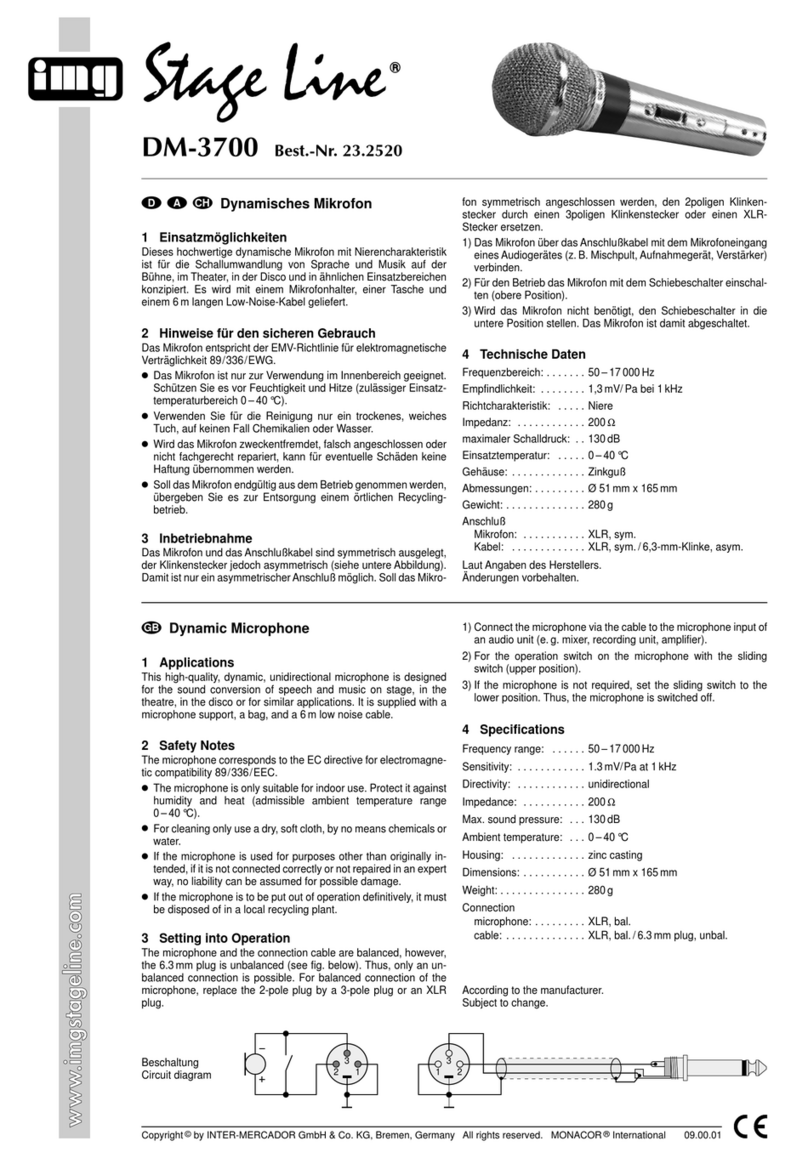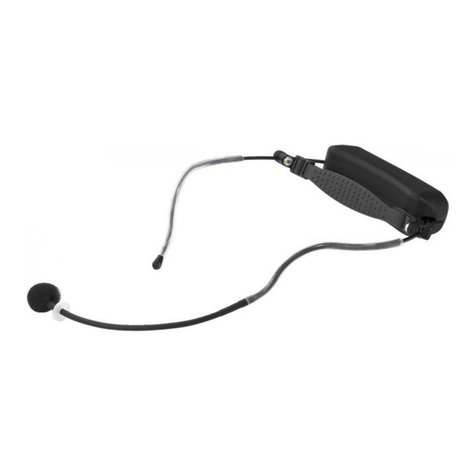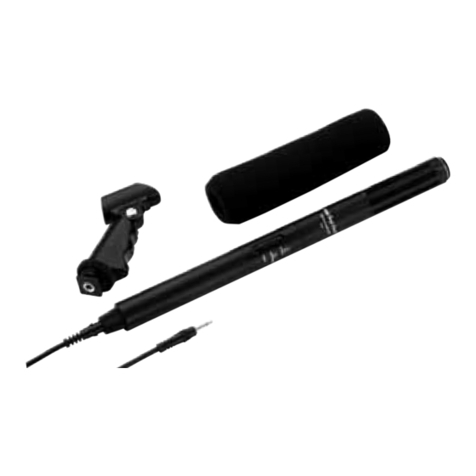Beschaltung
Circuit diagram
Schéma électrique
Copyright©by MONACOR INTERNATIONAL GmbH & Co. KG, Bremen, Germany. All rights reserved. A-0275.99.01.07.2004
®
Dynamisches Mikrofon
Einsatzmöglichkeiten
Dieses dynamische Mikrofon eignet sich optimal für
Gesangs-und Sprachanwendungen auf der Bühne,
im Theater, in der Disco etc. Zum Lieferumfang ge-
hören ein Mikrofonhalter, ein Anschlusskabel und
eine Aufbewahrungsbox.
Hinweise für den sicheren Gebrauch
DasMikrofon entspricht der EMV-Richtlinie fürelek-
tromagnetische Verträglichkeit 89/336/EWG.
●Das Mikrofon ist nur zur Verwendung im Innen-
bereich geeignet. Schützen Sie es vor Feuchtig-
keit und Hitze (zulässiger Einsatztemperatur-
bereich 0–40°C).
●Verwenden Sie für die Reinigung nur ein trocke-
nes, weiches Tuch, auf keinen Fall Chemikalien
oder Wasser.
●Wird das Mikrofon zweckentfremdet, nicht richtig
angeschlossen oder nicht fachgerecht repariert,
kann keine Haftung für daraus resultierende
Sach- oder Personenschäden und keine Garan-
tie für das Mikrofon übernommen werden.
●Soll das Mikrofon endgültig aus dem Betrieb ge-
nommen werden, übergeben Sie es zur umwelt-
gerechtenEntsorgungeinemörtlichenRecycling-
betrieb.
Inbetriebnahme
Das Mikrofon und dasAnschlusskabel sind symme-
trisch ausgelegt, der Klinkenstecker jedoch asym-
metrisch (siehe Abbildung). Soll das Mikrofon über
dieses Kabel symmetrisch angeschlossen werden,
den 2-poligen Klinkenstecker durch einen 3-poligen
Klinkenstecker oder einen XLR-Stecker ersetzen.
1) Das Mikrofon über das Kabel mit dem Mikrofon-
eingangeinesAudiogerätes (z.B.Mischpult,Auf-
nahmegerät, Verstärker) verbinden.
2) Den Mikrofonhalter auf ein Mikrofonstativ mit
16-mm-Gewinde (5/8") schrauben und das Mi-
krofon in den Halter schieben.
3) Zum Einschalten des Mikrofons den Schiebe-
schaltervon „OFF“(Mikrofonaus)auf„ON“stellen.
Technische Daten
Richtcharakteristik: . . . . . Niere
Frequenzbereich: . . . . . . 80–14000Hz
Empfindlichkeit: . . . . . . . 3,16mV/Pa bei 1kHz
Impedanz: . . . . . . . . . . . . 600Ω
Einsatztemperatur: . . . . . 0–40°C
Abmessungen: . . . . . . . . Ø 52,6mm x 180mm
Gewicht: . . . . . . . . . . . . . 254g
Anschluss
Mikrofon: . . . . . . . . . . XLR, sym.
6-m-Low-Noise-Kabel: XLR, sym./
6,3mm-Klinke, asym.
Laut Angaben des Herstellers. Änderungen vorbehalten.
Dynamic Microphone
Applications
The dynamic microphone is ideally suited for vocal
sound and speech applications on stage, in the
theatre, in the disco, etc. It is supplied with a micro-
phone support, a connection cable, and a case.
Safety Notes
The microphone corresponds to the directive for
electromagnetic compatibility 89/336/EEC.
●The microphone is only suitable for indoor use.
Protect it against humidity and heat (admissible
ambient temperature range 0–40°C).
●For cleaning only use a dry, soft cloth, by no
means chemicals or water.
●No guarantee claims for the microphone and no
liability for any resulting personal damage or
material damage will be accepted if the micro-
phone is used for other purposes than originally
intended, if it is not correctly connected or not
repaired in an expert way.
●If the microphone is to be put out of operation
definitively, take it to a local recycling plant for a
disposal which is not harmful to the environment.
Setting into Operation
The microphone and the connection cable are
balanced, however, the 6.3mm plug is unbalanced
(see figure). For balanced connection of the micro-
phone via this cable, replace the 2-pole plug by a
3-pole plug or an XLR plug.
1) Connect the microphone via the cable to the
microphone input of an audio unit (e.g. mixer,
recording unit, amplifier).
2) Screw the microphone support to a microphone
stand with 16mm thread (5/8") and slide the
microphone into the support.
3) To switch on the microphone, set the sliding
switch from “OFF” (microphone off) to “ON”.
Specifications
Pick-up pattern: . . . . . . . cardioid
Frequency range: . . . . . . 80–14000Hz
Sensitivity: . . . . . . . . . . . 3.16mV/Pa at 1kHz
Impedance: . . . . . . . . . . . 600Ω
Ambient temperature: . . . 0–40°C
Dimensions: . . . . . . . . . . Ø 52.6mm x 180mm
Weight: . . . . . . . . . . . . . . 254g
Connection
microphone: . . . . . . . . XLR, bal.
6 m low noise cable: . XLR, bal./
6.3mm plug, unbal.
According to the manufacturer.
Subject to technical modification.
GB
DM-2100
Best.-Nr. 23.1630
wwwwww..iimmggssttaaggeelliinnee..ccoomm
D A CH
Microphone dynamique
Possibilités d’utilisation
Lemicrophonedynamiqueestparticulièrementbien
adapté à des utilisations de chants et discours sur
scène, au théâtre et en discothèque... Un support
micro, un cordon de branchement et un coffret sont
livrés.
Conseils d’utilisation et de sécurité
Le microphone répond à la norme européenne
89/336/CEE, relative à la compatibilité électroma-
gnétique.
●Le micro n’est conçu que pour une utilisation en
intérieur. Protégez-le de l’humidité et de la cha-
leur (plage de température de fonctionnement
autorisée : 0–40°C).
●Pour le nettoyer, utilisez uniquement un chiffon
sec et doux, en aucun cas de produit chimique ou
d’eau.
●Nous déclinons toute responsabilité en cas de
dommages matériels ou corporels résultants si le
micro est utilisé dans un but autre que celui pour
lequel il a été conçu, s’il n’est pas correctement
branché ou réparé par un technicien habilité ; en
outre, la garantie deviendrait caduque.
●Lorsque le micro est définitivement retiré du mar-
ché, vous devez le déposer dans une usine de
recyclage de proximité pour contribuer à son éli-
mination non polluante.
Fonctionnement
Le microphone et le cordon de branchement sont
symétriques, la fiche jack 6,35 est asymétrique (voir
schéma). Si le microphone doit être relié via ce cor-
don de manière symétrique, remplacez la fiche jack
2 pôles par une fiche jack 3 pôles ou une fiche XLR.
1) Reliez le microphone via le cordon à l’entrée
micro d’un appareil audio (par exemple table de
mixage, enregistreur, amplificateur).
2) Vissezle support micro sur un pied micro avec un
filetage 16mm (5/8") et glissez le micro sur le
support.
3) Pour allumer le microphone, mettez l’interrupteur
de la position “OFF” (micro éteint) sur la position
“ON”.
Caractéristiques techniques
Directivité : . . . . . . . . . . . cardioïde
Bande passante : . . . . . . 80–14000Hz
Sensibilité : . . . . . . . . . . . 3,16mV/Pa à 1kHz
Impédance : . . . . . . . . . . 600Ω
Température fonc. : . . . . 0–40°C
Dimensions : . . . . . . . . . . Ø 52,6mm x 180mm
Poids : . . . . . . . . . . . . . . 254g
Branchements
Micro : . . . . . . . . . . . . XLR, sym.
Cordon low noise 6m : XLR, sym./
jack 6,35, asym.
D’après les données du constructeur.
Tout droit de modification réservé.
F B CH
